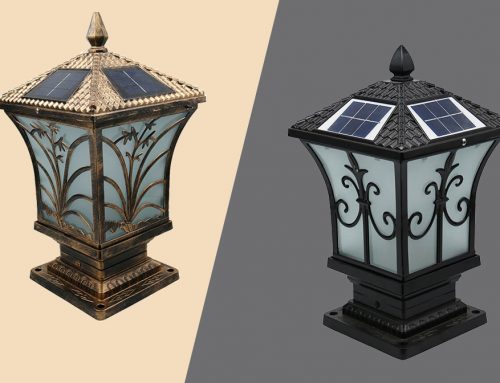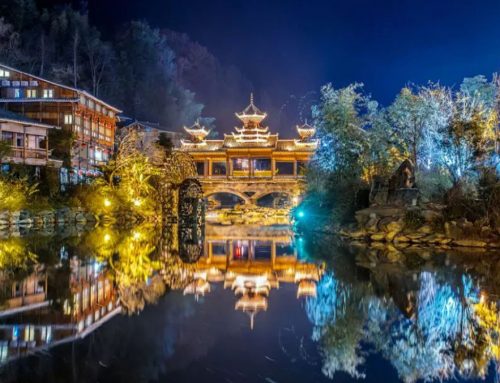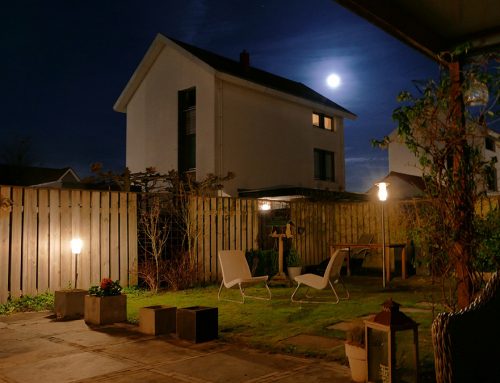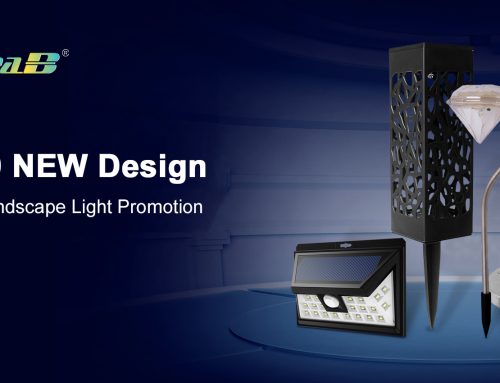Composition Of Modern Garden Landscape Lighting Systems
The garden landscape lighting systems is mainly composed of 4 major components, namely: light source, lamp, light pole, basis.
Light source
Light source is an important part of all lighting products. According to different illumination requirements, different brands and different types of light sources can be selected. Commonly used light sources are: new LED light source , energy saving lamp, fluorescent lamp , sodium lamp , metal halide lamp , ceramic metal halide lamp. And incandescent lamps . Characteristics of each light source:
1. LED
Also known as a light-emitting diode, referred to as LED , is a new type of light source that directly converts electrical energy into visible light through the principle of electro luminescence through a semiconductor diode. Electro luminescence refers to the phenomenon of luminescence due to the interaction of an appropriate substance with an electric field.
Advantages and disadvantages of LED light-emitting diodes:
As a new type of semiconductor light source, the light-emitting diode has the following advantages compared with the conventional light source: long life, luminous time of up to 100,000 hours; short start-up time, response time is only tens of nanoseconds; structure is firm, as a solid The solid structure can withstand strong oscillation and impact; high luminous efficiency and low energy consumption is an energy-saving light source; the illuminant is close to the point source, and the radiation model of the light source is simple, which is beneficial to the design of the luminaire; the directionality of the illuminating is very strong, A reflector is required to control the direction of illumination of the light, which can be made into a thin lamp for applications where there is not much installation space. It is generally believed that the light-emitting diode is the fourth generation light source after incandescent lamps, fluorescent lamps, and high-pressure discharge lamps. With the advancement of new materials and manufacturing processes, the performance of LEDs is increasing and the range of applications is becoming wider and wider.
2. Fluorescent lamps, energy-saving lamps
Fluorescent lamps and energy-saving lamps are low-pressure mercury vapor arc discharge lamps, usually long tubular, with one electrode at each end. The lamp contains a low-pressure mercury vapor and a small amount of inert gas, and the inner surface of the lamp is coated with a phosphor layer. Fluorescent lamps are divided into straight tube fluorescent lamps and compact fluorescent lamps. Straight tube type fluorescent lamps can be divided into preheating start, quick start and instant start according to the starting mode. According to the lamp, it can be divided into T12 , T8 and T5 . Compact fluorescent lamps are developed to replace incandescent lamps that consume a lot of power, with low energy consumption and long life. The life of an ordinary incandescent lamp is only 1000 hours, and the typical life of a compact fluorescent lamp is 8000-10000 hours.
Advantages and disadvantages of fluorescent lamps and energy-saving lamps:
The main advantage of fluorescent lamps is their high luminous efficiency. A typical fluorescent lamp emits about 28% of the visible light . The geometry of the lamp, the filling gas and pressure, the phosphor coating, the manufacturing process, and the ambient temperature and power frequency all have an effect on the luminous efficacy of the fluorescent lamp. The color of the light emitted by the fluorescent lamp is largely determined by the phosphor applied to the inner surface of the tube. The color temperature of different fluorescent lamps varies widely, from 2900K to 10000K . According to the color, it can be roughly divided into warm white ( WW ), white ( W ), cool white ( CW ), and daylight ( D ). Normally, warm white ( WW ), white ( W ), and daylight ( D ) fluorescent lamps have typical color rendering, and cool white ( CW ), soft white, and advanced warm white ( WWX ) fluorescent lamps provide better color rendering. , Advanced Cool White ( CWX ) fluorescent lamps provide excellent color rendering. Fluorescent lamps emit light that is scattered and not easy to focus, so it is widely used for softer lighting, like downlighting, uplighting floodlighting, work lighting, soft accent lighting, etc.
3. Sodium lamp
Also known as a high pressure sodium lamp is a discharge lamp that emits light by sodium vapor discharge. It has high luminous efficiency, long life, good adaptability to the environment, and can work normally under various temperature conditions.
Advantages and disadvantages of sodium lamps:
The size and size of the sodium lamp are large; the color difference is an uncomfortable yellow-white luminescence; the color rendering is poor, and the color rendering index of ordinary high-pressure sodium lamps is only 23. Therefore, ordinary high-pressure sodium lamps are mostly used for road lighting and other luminous efficacy and life. High requirements, and areas where light color and color rendering are not required. There is also a modified high color rendering high-pressure sodium lamp with a warm white color and a color rendering index of over 80% . This kind of lamp can be used to display the field of lighting, and the energy saving effect is obvious.
4. Metal halide lamp
The metal halide lamp is also a kind of high-pressure gas discharge lamp. The basic structure is a transparent glass casing and a high temperature resistant quartz glass arc tube. The nitrogen gas or inert gas is injected between the outer casing and the inner tube. Inert gas, mercury vapor and metal halide. The basic working principle of the metal halide lamp: After entering the working state, the vapor of the metal halide diffuses to the arc center of the arc, and is dispersed into metal atoms and halogen atoms under the action of high temperature, and the metal atoms participate in the discharge to emit visible light, when the metal atom and the halogen When the atoms diffuse into the wall area of the periphery of the electric solitary tube, the two combine to form a metal halide.
Advantages and disadvantages of metal halide lamps:
The biggest advantage of metal halide lamps is their high luminous efficiency and long life. Due to the structural form of the lamp body and the metal halide to be filled, the luminous efficacy of the metal halide lamp, the color temperature of the light, and the color rendering property vary greatly. Although the poor metal halide lamp has high luminous efficiency, the color rendering property is poor; the light color emitted by the good metal halogen lamp is close to the white color of natural light, the visual feeling is comfortable, and the color rendering property is also better. The working characteristics of the metal halide lamp are that it cannot be lit immediately, and it takes about 5 minutes to heat up to achieve full brightness output. After a power interruption, re-start before the need 5–20 minutes to cool the lamp. Metal halide lamps are sensitive to fluctuations in the supply voltage. When the supply voltage changes by more than 10% above and below the rated value , it will cause a change in light color. And different working positions will also affect the color of the light and the life of the lamp.
5. Ceramic metal halide lamp
The ceramic metal halide lamp is a metal halide lamp using translucent ceramics as an electric orphan tube. It is a relatively new high-quality illumination source that combines the advantages of quartz metal halide lamp and sodium lamp ceramic technology.
Advantages and disadvantages of ceramic metal halide lamps:
Since the ceramic tube can withstand higher temperatures, chemically very stable, and therefore the ceramic metal halide lamp having a higher luminous efficacy, long life, light color more stable lifetime, small size, superior color, Ra> 80 is advantage. And the ceramic tube can filter out most of the ultraviolet radiation, reducing the fading caused by the illumination. In view of these advantages, ceramic metal halide lamps are becoming an important source of light in the design of light effects.
6. Incandescent lamp
Incandescent luminescence refers to visible light electrical radiation generated by the excitation of atoms. Incandescent lamps use the principle of incandescent illumination to allow current to pass through the tungsten wire in the vacuum, causing the tungsten filament to warm up to incandescence and emit visible light. The color temperature of an ordinary incandescent lamp is 2800K , which is yellower than natural light and looks warm. The advantages and disadvantages of incandescent lamps: low cost, easy to use and install. Suitable for frequent opening, the effect of the off on the performance and life of the lamp is very low.
Advantages and disadvantages of incandescent lamps:
Short life and low luminous efficacy. Incandescent lamps emit less than 10% of the visible light , and most of the energy is converted to infrared radiation, producing a large amount of heat. In addition, the ultraviolet radiation emitted by incandescent lamps is also relatively high, causing fading of the illuminated articles.
Lamp
More than 80% of the reflectors, translucent cover with a transmittance of more than 90% , high IP rating to prevent the penetration of mosquitoes and rain, and a reasonable light distribution cover and internal structure to prevent glare from affecting the safety of pedestrians and vehicles. . , cutting wire 2 , welding lamp bead 3 , making lamp board 4 , measuring board 5 , coating thermal grease 6 , fixing lamp board 7 , welding wire 8 , fixing reflector 9 , mounting glass cover 10 , packing head 11 , Connect the power cord 12 , test, aging 13 , inspection, labeling 14 , packing, and storage.
Detailed steps for lighting production:
Cut the wire to make the wire, take 1.0mm? red, black copper core multi-strand line , each cut 6 segments 40mm , peel ends 5mm at both ends , and dip the tin. Make the lamp board lead, take YC2X1.0mm? two core wire , cut a section of 700mm , peel the outer skin 60mm , brown line peeling head 5mm , immersion tin; blue line peeling head 5mm , immersion tin. The outer end peeled off the outer skin 80mm , the brown line peeled head 20mm ; the blue line peeled head 20mm .
- 1. The length of the line and the size of the stripped head should be strictly consistent.
- 2. When peeling the user’s wire sheath, do not injure the inner skin.
- 3. Peeling the head should be uniform and smooth.Solder the lamp bead, make the aluminum plate of the lamp board, place it on the workbench flat, and evenly apply the thermal grease in the range of the lamp bead icon.Take the lamp beads, look at the positive and negative poles, and place them on the lamp bead icon. Use a soldering iron and tin to solder the positive and negative pins to make a light board.
Key notes:
- 1. Positive and negative poles must be identified.
- 2. Thelampbeads and placed upright against the aluminum substrate, so as not reflector hole.
- 3. Theamount of thermal grease should be moderate (about1mg per lamp ), the coating should be even, and the silicone grease should be used to contaminate the surface of the lamp bead, surrounding objects and the human body.
- 4. Thesolder joints are bright, full and burr-free.Test the light board 45V DC power supply, look for the positive and negative poles of the light board, and test the power. 45V DC power supply, illuminance meter, multimeter.
Details note:
- 1. Pay attention to safety and prevent electric shock.
- 2. Look for positive and negative electrodes.Apply thermal grease.
- 3. The amount should be moderate (about03grams) and the coating should be uniform.
- 4. Be careful that the silicone grease contaminates the surface of the lamp body, surrounding objects and the human body.Fixing the lamp board Place the silicone-coated lamp boards one by one on the bottom of the lamp housing, so that thetwo screw holes of each lamp board are aligned with the corresponding fixing holes of the lamp housing. Use M3X5 round head cross stainless steel screws to tighten.
- 5. The installation direction of the lamp board is consistent and neatly arranged to avoid the unevenness or gap of the reflector.
- 6. The screws should be tightened.The welding wire is taken as a good wire, the red wire is opposite to the positive electrode, the black wire is opposite to the negative electrode, and all the lamp plates are soldered in parallel by a soldering iron.Take the completed lamp board lead, the red line is on the positive pole, the black line is on the negative pole, the tinned end is soldered to the middle of the lamp board with a soldering iron, and the other end is led to the lower end plug along the inner side of the lamp envelope. The wiring is flat. The solder joints are bright, full and burr-free. Fix the reflector to take the reflector, put it on the lamp board, align the fixing holes, and let the lamp beads all out of the round hole of the reflector, and tighten the M3X12 stainless steel round head cross bolt one by one. : Do not touch the surface of the reflector directly with your hand. The surface of the reflector is flat and seamless. . The glass cover is used to cut the waterproof silicone strip at both ends, and the length is 2CM longer than the long side of the glass cover . Use a pair of tweezers and a small slotted screwdriver to press the waterproof strip into the groove on both sides of the lamp housing, leaving 1CM at each end . Use two people to tighten the ends of the waterproof rubber strip separately, and use one person to take the glass cover face up into the groove , and cut off the excess adhesive strips at both ends.
- 7. When pulling the rubber strip, the force should be even and moderate, not too strong, to prevent breakage.
- 8. Do not touch the glass surface directly with your hands.Install the plugs in the M5X20 stainless steel hexagonal bolts and put them into the waterproof bolt aprons. Take the upper plug and the corresponding waterproof rubber pad, align the corresponding fixing hole position, and fix it to the lamp housing with the inner hexagonal bolt of the rubber ring. Take the waterproof head, insert the light board lead, and tighten with the self-contained nut. Remove the lower plug and the corresponding waterproof rubber pad, and install the waterproof head with a 14-17 fork wrench. Align the corresponding fixing holes and fix them to the lamp housing with the inner hexagon bolts of the rubber ring. M5 hexagonal wrench, 14-17 fork wrench connected to the power cord. Test and age AC220V power supply, measure brightness and illuminance (pay attention to the distance and range of illumination), and measure several times to see if it meets industry standards, enterprise standards and customer requirements. Normal, power on 24 hours aging, otherwise return to overhaul.
- 9. Pay attention to electricity safety and prevent electric shock.
- 10. Average the test data
- 11. Aging time of at least24hours, inspection and labeling.
- 12. Comprehensive inspection of product appearance, functional parameters and safety parameters.
- 13. The qualified label is required to be attached to the specified part and in the same direction.Packing and warehousing will pass the qualified garden light into the inner packaging (hard transparent plastic bag), buckle the foam box and put it into the carton.Packing list, manual, certificate, warranty card. Seal the carton with tape. The product name, specification model, quantity, and production date are marked on the carton; Storage, storage environment requires ventilation, dry, room temperature around 20 °C , can prevent moisture, anti-corrosion, mildew, anti-rat.
- 14. The surface of the package should be clean, free of stains, dust, and other marks.
- 15. The texture of the outer packaging should be hard and convenient for long-distance transportation.
- 16. The label is clear and easy to store, making it easy for users to check.
- 17. Secure storage.
Light pole
The main materials of the outdoor yard lights pole are: equal-diameter steel pipe , opposite-shaped steel pipe, equal-diameter aluminum pipe , cast aluminum light pole, aluminum alloy light pole. Commonly used diameters are Φ60 , Φ76 , Φ89 , Φ100 , Φ114 , Φ140, Φ165 . Depending on the height and the location used, the thickness of the selected material is divided into: wall thickness 2.5 , wall thickness 3.0 , wall thickness 3.5 . (The above is the regular size)
Production process: 1 , blanking 2 , bending 3 , welding 4 , repairing and polishing 5 , shaping 6 , aligning 7 , installing the bottom plate 8 , welding the bottom plate 9 , opening the door 10 , welding the door strip 11 , the electrical strip 12 , the lock bottom 13 , curved fork 14 , galvanized 15 , spray 16 , inspection 17 , delivery
Detailed steps for lamp pole production:
- Thelower shearing
1.1 Before cutting, first adjust the slope of the cutting machine to match the required longitudinal scissors.
1.2 Set the position of the steel plate to ensure the maximum size of the remaining material, so that the remaining material can be used.
1.3 The length dimension is guaranteed by the flat opening, the wide bottom dimension requires ≤±2mm, the high bar blanking dimension tolerance, and the large head of each section takes the positive tolerance; general: 0-2m . The small head takes the negative tolerance, and after the -2-0mm size is adjusted, it is completed by the cutting machine and the automatic cutting machine.
1.4 Equipment: The material should be inspected for the operation of the rolling shear equipment, remove the debris on the track, and keep the equipment in good working condition.
- Bend.Bending is the most critical process in the production of light poles. The quality of the bends directly affects the quality of the poles and cannot be repaired after bending. Specific details are as follows:
2.1 Before bending: Firstly, the cutting slag of the sheet material is removed to ensure that no slag is pressed to damage the mold during bending.
2.2 Check the length, width and straightness of the sheet. The straightness is less than or equal to 1/1000 . If the straightness is not up to the requirement, the correction, especially the polygonal rod, must be guaranteed to be non-straight.
2.3 Adjust the bending depth of the bending machine to determine the position of the sheet.
2.4 Correctly scribe on the sheet, error: ≤ ± 1mm .
2.5 Correctly match the line, bend it correctly, and make the pipe joint to the minimum. At the same time, the height of the two sides is not more than 5mm .
- Welding.Straight seam welding of the pipe joint after bending during welding. The welding uses submerged arc welding for automatic welding, mainly because the welder should have more responsibility. The welding position should be adjusted at any time to ensure the straightness of the weld.
- Repair and polish.Repair grinding is the repair of tube blank defects after automatic welding. The repairing personnel should check the roots one by one and find the repaired parts in the defective place. After the repair welding is completed, the grinding is carried out again, and the grinding joints are basically the same as the automatic welding joints.
- Plastic surgery.The shaping process includes the straightening of the pole and the full circle and polygon diagonal dimensions of the two ends of the billet. The general tolerance is <±2mm . The straightness error of the billet does not exceed:≤±1.5/1000 .
- Head together.In the same process, the bent ends of the tube blank are flattened to ensure that the nozzle is perpendicular to the center line, and there is no unevenness in angle and height, and at the same time, the end surface is polished after being flattened.
- Install the bottom plate.The key to spot welding the bottom flange and the rib is to ensure that the bottom flange is perpendicular to the straight centerline of the lamp, the rib is perpendicular to the bottom flange, and is parallel to the straight busbar.
- Solder bottom flange and ribs.Welding requirements refer to the national standard welding process to ensure that the welding quality of the welded joints is beautiful, without pores and slag inclusions.
- Open the door.This process must be bold in the course of work ( 1 ) First of all, you must see the drawing to determine the direction of the door, and then locate according to the size of the drawing. Dimensions include: up and down, left and right, and the size of the door frame. The plasma cutting should be careful, ensuring that the kerf is straight, and the cut door and the lamp pole are soldered with electric welding.
- Welding door strips, electrical strips, lock seats.When the door strip is welded, the door strip of 20mm width is extended 8-10mm . Especially when spot welding, the door strip should be close to the pole and the welding should be firm. The welding electric strip and the lock seat are mainly positioned according to the drawing, and the lock seat is welded in the middle of the door with an error of ≤±2mm , and the above level is maintained, and the light pole cannot be exceeded.
- Bent fork.The bending process has the same properties as opening the door and should be bold. First pay attention to the direction of the door, the second attention to the starting point, the third angle of the fork, the traction speed can not be slow and fast, and the yield is guaranteed to be 100% .
- Galvanized.The quality of the galvanizing directly affects the quality of the lamp post. The galvanizing requirements are galvanized according to national standards. After plating, the surface is smooth, no color difference, no sag, and the sag can be re-plated.
- Spraying.The purpose of spray molding is to be beautiful, and to prevent corrosion.
13.1 Grinding: The surface of the galvanized rod is smoothed with a polishing wheel to ensure that the surface of the rod is smooth and flat.
13.2 Straightening: Straightening the polished pole and shaping the shape of the mouth. The length of the pole must be 1/1000 . The caliber requirements are: small rod ≤±1mm ; high rod ≤±2mm .
13.3 door panel
13.3.1 All the door panels shall be treated after galvanizing, including zinc deposits, zinc leakage and zinc deposits in the keyholes.
13.3.2 When drilling the screw hole, the electric drill must be perpendicular to the door panel, the clearance around the door panel should be waiting, and the door panel should be level.
13.3.3 After the screws are fixed, the door panel should not be loose, and the fixing must be firm to prevent it from falling off during transportation.
13.3.4 Spray powder: Put the lamp pole of the door into the spray booth, spray the plastic powder according to the production plan, and then enter the drying room. The temperature and holding time of the drying room must be strictly in accordance with the requirements of each plastic powder to ensure Quality requirements such as adhesion and finish of plastic powder.
- Factory inspection.The factory inspector shall carry out the factory inspection by the quality inspector of the factory. The factory inspector must inspect the item according to the light pole inspection item. The inspector must record and archive at the same time, and the quality inspector signs it before delivery.
- Bandaging, delivery.
15.1 bandaging according to customer needs
15.2 Before the delivery, the warehouse will meet all the procedures before the delivery. According to the contract, the quantity, weight and amount of the product will be settled, and the delivery can be carried out after the financial invoice is issued. The doorman can go out with the exit permit.
Basis
The flange is an important component of the installation of the courtyard light pole and the ground. Garden lamp installation method: Before installing the garden lamp, it is necessary to use the M16 or M20 (common specification) screw to weld the base cage according to the standard flange size provided by the manufacturer , and then excavate the pothole of the appropriate size at the installation site. The foundation cage is placed therein, and after horizontal correction, the concrete cage is used to water the concrete cage, and after 3-7 days, the cement concrete is fully solidified, and the garden lamp can be installed. ( Note: the pre-buried pipeline needs to be taken out when the garden light is poured . )
Installation steps:
When installing the garden light, open the package and check the integrity of the garden light. Refer to the product manual for assembly and wiring. The general steps are: open the lamp housing, install the light source and supporting electrical appliances (electrical wiring refer to the electrical manual), and take the lead wire from The threading hole is led out to the bottom of the pole , then the lamp head is linked with the pole, pay attention to tighten the fastening screw, and then align the garden lamp flange with the basic embedded screw and stand vertically. Then use a nut or pad to level the flat to tighten the mounting nut.
Garden light circuit wiring:
After the installation of the garden light, you can refer to the manual and the electrical code for wiring work. It should be noted that the installation wiring needs to be grounded. Generally, the garden light will be reserved for grounding to prevent safety hazards.
Click to know more about Oreab LED light, or get more garden design in Our Facebook.
Related Blog Posts
How to Troubleshoot Outdoor Garden Lights And Repairs
How to Make Your Own Landscape Lighting Design
How to Chose And Buy Garden Lights




